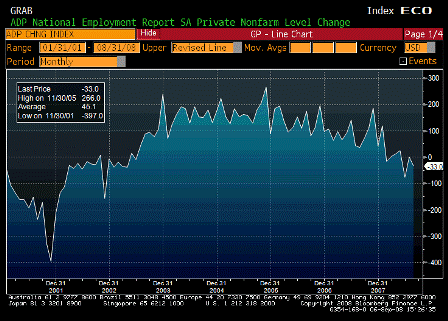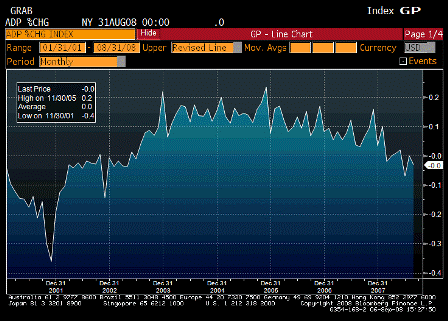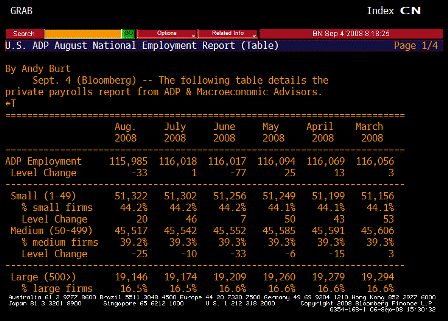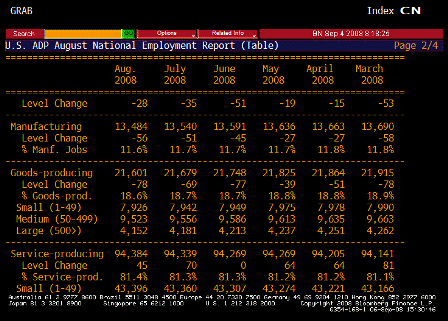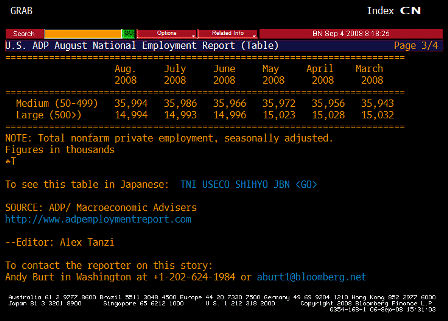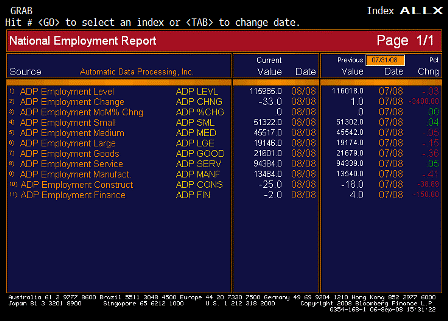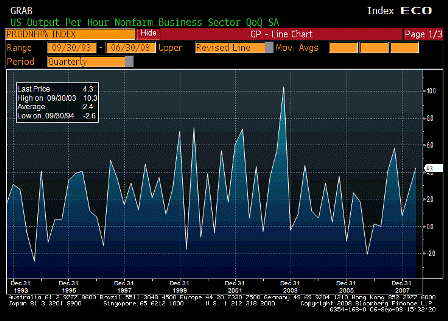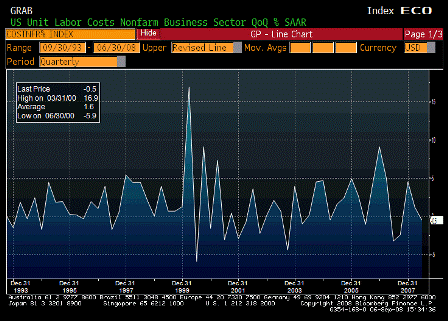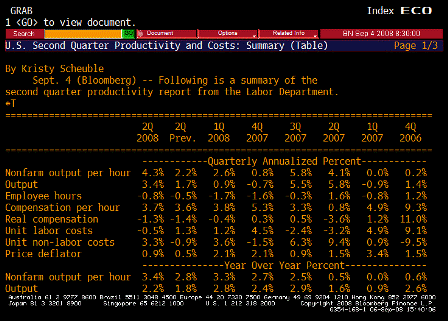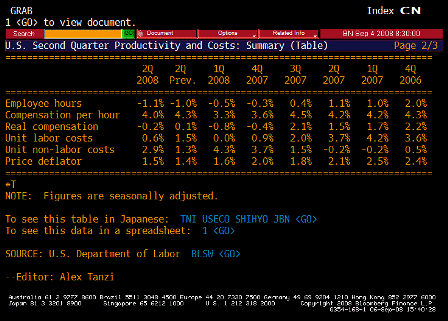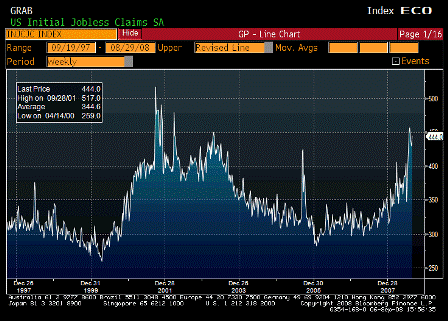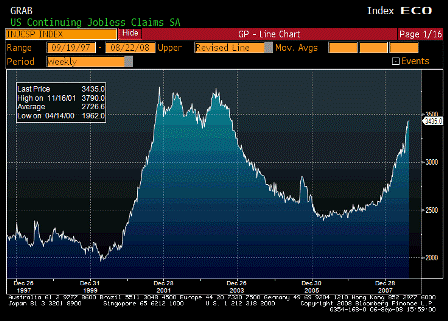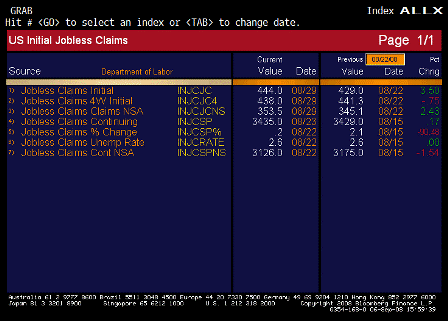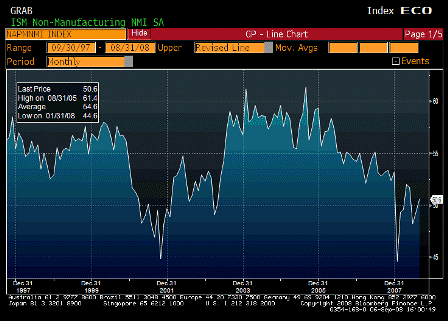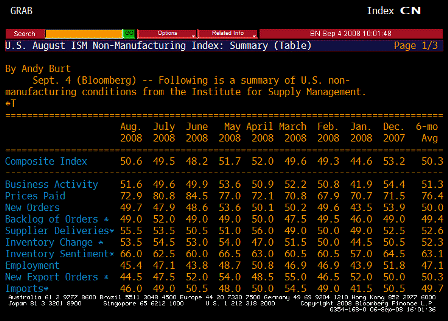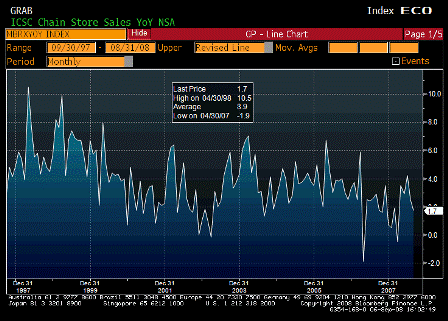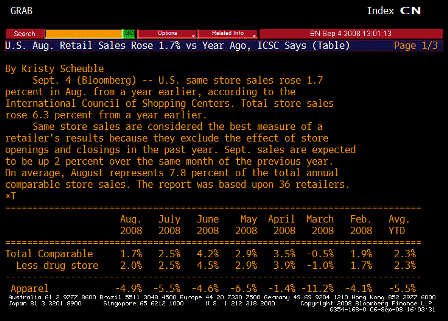[Skip to the end]
(the blockquotes represent powerpoint slides)
September 10th, 2007:
Speech given at the Foundations and Endowments Investment Summit
pdf version
How Modern Money Operates and the Consequent Investment Implications
by Cliff Viner, III Associates
I’m taking a great risk here today. I’m taking a great risk in presenting statements that may be exactly contrary to what you’ve been led to believe by the media, well known economists, and even by former Fed Governors and chairmen. I know this is a risk because my partner Warren Mosler, as well as myself and our firm, have been actively advancing these ideas for the past 15 years. We have been widely disregarded, with the exception of Cambridge in the UK, and the University of Missouri at Kansas City, being amongst the few notable successes where 40 PhD’s are now training in our program. I personally have been rebuffed at the University of Pennsylvania and the Wharton School, where I graduated undergrad in 1970 and the graduate division in 1972.
But I’m going to take this risk because it’s important to our economic futures, to recognize how things actually work, and because it has policy and investment implications for all of our business decisions. I’m taking the risk because I do not want all of you, who have taken your valuable time out to hear this talk, to have the experience of spending all this time, and not learn anything new of value.
Let’s start with some incredibly simple, but incredibly powerful concepts. All the major currencies in the world are no longer backed by anything. They are not commodity-based or commodity-backed currencies anymore. The only thing the Fed will give you for a 10 dollar bill is two fives. This is called fiat money and this is what we have.
So why do today’s currencies have any value? Simple question. We’re all veteran money managers and we should have the answer. You’ve probably heard answers like it’s the medium of exchange, or a storehouse of value, or the most widely given answer, faith in the currency, which was the only answer given to me when I asked the entire Economics faculty at a major University. So do you believe that the entire multi-trillion dollar world dollar economy is built on faith, as well as the yen and Turkish lire denominated economies?
The answer to why this fiat currency has value is actually on the money. It says “This note is legal tender for all debts, public and privateâ€ÂÂ. The key word is public. The dollar is the only medium for extinguishing tax liabilities to the sovereign government. Money is tax driven, and that’s why it’s valuable.
“Fiat Money derives its value solely from its ability to extinguish tax obligations.”
That’s why we care about dollars, the Japanese care about yen, and why the Turks care about Turkish lire. When the Mexican peso blew up and all faith was gone, why did it only go from 3:1 (dollar) to about 10:1, instead of 100:1 or a million:1, or just vanish completely? When the ruble lost all faith, it only went from 6:1 to about 28:1, it didn’t go worthless or vanish. As long as there are enforceable taxes due, payable in a particular currency, it will have value.
This concept was perfectly understood centuries ago, but forgotten during the commodity money phase. The great Commonwealth of Virginia, established four centuries ago, knew this. They wanted to establish a currency to facilitate commerce. The government could issue currency, or spend in a new currency, but people would laugh and think why should I accept this piece of paper? The first thing Virginia did was establish a tax, let’s just say a 100 card tax per person per year. Now people would ask what they had to do to earn the currency, to be able to pay the tax, and not go to prison. The need for the cards makes the people willing sellers of goods, services, and their labor to get the cards, and avoid penalty for non payment. In this manner, the state can use its otherwise worthless paper to provision itself. The government established the amount of value of the currency, by what it demanded in exchange for these cards. The government is the monopoly issuer. Fiat currencies are tax driven.
Now that we’ve established our state, our tax, and our fiat currency made of these pieces of paper to pay taxes, let’s go further. Let’s say we’re going to be fiscally responsible in our new sovereign state. We’re going to run a budget surplus. We’re going to tax 100 cards, and we’re only going to spend 90.
What is going to happen? There are not enough cards to pay the tax. People will be offering their possessions and their labor for sale to try and get the cards to pay the tax, but sufficient cards are not in circulation to meet their needs. The result is called deflation; people scramble to sell anything to get cards that in the aggregate do not exist.
Okay, so you as Governor of Virginia notice this crisis going on, and you realize your mistake and say, I’ll tax 100 cards and I’ll spend 100 cards. I’ll run a balanced budget. Great. But let’s say I wanted to put one card in my savings account, or keep one around for spending money. I can’t. There are no cards left. The government has spent 100 cards and taxed 100 cards. There is nothing left for what I very carefully call net financial savings.
So let’s talk about savings, or maybe put another way, making money. How can we save money? We see the problem in old Virginia, no cards to save, but it’s the same exact notion for the U.S. dollar savings today. Let’s say that I represent all domestic dollar holders (individuals, pensions, ins cos, banks) and I have a total of one net dollar, meaning net of borrowing. Let’s say you represent all foreign net dollar holders (Toyota, central banks, any foreigners who have net dollars), and you have a total of one net dollar. So there is a total of two net dollars in the world. How are we as a group, going to save money? I guarantee you, that no matter what we do, at the end of the year we’ll all have two net dollars total. You may have $1.50, while I have $0.50, but we’re stuck, the total is two dollars. It’s the same problem as in old Virginia. So, how do we get net financial savings? The answer is, the only way to add to dollar net financial savings, is for the sovereign government to spend money, and not ask for it back in taxes. In other words, deficit spend.
“Budget Deficits are the only source of adding to private sector net financial assets.
Surpluses reduce net financial assets.”
Deficit spending is the source of worldwide net new U.S. dollar financial savings. The national income accounting identity is: the Government deficit EQUALS the non government accumulation of net financial assets.
Budget Deficit = Domestic and Foreign Accumulation of U.S. $ Net Financial Assets”
Notice the word equals. Not approximately, but equals. So when you hear that the deficit is draining our savings, or they show you the National Debt Clock, it’s really the World Dollar Savings Clock. We’ll do more on deficits in a little bit.
Let’s get back to our new sovereign state. We notice that people want to save some cards each year. So as the wise Governor, we decide to tax 100 cards each year, but we will now spend 105 cards. Let’s say that people seem to want to save about 5 cards per year. So here is what’s interesting. We will be deficit spending 5 cards per year, but people want to save these cards, not spend them. Therefore, there is some noninflationary level of the deficit related to the desire to accumulate net financial assets. You can run a deficit without causing inflation if it matches savings desires.
Let’s talk about those 5 cards. At the end of every day, someone is going to have those cards. I could have lent them to you, and you could lend them to a corporation, or even to a bank. But at the end of the day, someone has the cards. How are they going to earn interest overnight? They can’t, not unless the sovereign says, if you give me those 5 cards, I’ll give you a different card, a promise card to pay back those 5 cards with interest. Looks like a Treasury bill to me.
But let’s think about it. Did the sovereign borrow the money to spend? Did the sovereign go begging to the markets for money to be able to spend? No, it’s actually the other way around. The sovereign spends first, and the market begs the sovereign for a security so it can earn interest.
“Sovereign Governments with Fiat Currencies Do Not Borrow in Order to Spend.”
In Fed speak, securities are offered to drain excess reserves, which are called offsetting operating factors. Sound familiar? This is the way all these fiat currency systems operate. The U.S. government does issue securities, but only to support an interest rate, not to borrow and spend. That’s why the “credit†is good. If that’s too much to believe, think of Turkey. Turkey’s annual lire deficit had been running over a quadrillion lire, inflation was 100% per year, triple digit interest rates, and there was huge currency depreciation. Not much faith there. How come they never defaulted? Either they are the greatest borrowers ever known to man, or it’s simply a reserve drain of extra cards.
Let’s continue with old Virginia and the cards. We just saw how the government can create Treasury bills, which are very much like money, and are really just time deposits at the Fed. So we have Treasury bills. But where do bank deposits come from? Again, the answer is from the very first week of any Money and Banking course, and yet very few people recognize the answer. The answer is that all deposits come from loans as a matter of system accounting. Loans create deposits. Most people believe you need funds, deposits, or savings to lend. Absolutely not true. The loan immediately creates its own deposit. That’s how the accounting of the banking system works. You start a bank with $10 in capital and are allowed to leverage to make about $150 of loans. The bank balance sheet includes $150 of loan assets and $150 of deposit liabilities. Loans create all bank deposits.
So now let’s bring in the Federal Reserve. I have very limited time here, so I’m just going to say that we hear about the Fed injecting reserves, pumping in money, printing money, pumping in liquidity to the banking system, and funds not getting distributed to the right people. This is utter misrepresentation and has no application to the non government sector. The Fed’s only tool is a price tool, the fed funds rate. It has no quantity tools.
“The Fed Can Control Only Interest Rates, Not the Quantity of Money”
The Fed has no direct control, over the quantity of bank deposits being created, or the quantity of any other form of credit. All this reserve management from the Fed, adding or subtracting reserves, is just the management of clearing checks at the bank’s segregated Fed accounts. The Fed acts when system or Treasury operating factors may make some of the pluses and not offset the minuses, or the unusual situation like recently, when banks might be afraid to trade their reserves with another bank in the fed funds market.
The Fed does not supply money the banks use for lending, does not directly affect the quantity of bank lending or what is casually known as money supply, and can’t reflate and pump money to banks or anyone else.
Note that when Barclay’s borrowed from the Bank of England 10 days ago, it was because of a clearing house settlement problem at the Central bank.
Please see me later so I can explain what the Fed did on 8/17. They lowered the discount rate only to control the funds rate better and to raise the funds rate from low levels where it was trading. I’ll show you the 8/16 email which shows exactly this recommendation which we communicated to the Fed.
When Japan pumped 30 trillion of excess reserves into the system, this did absolutely nothing, except insure that the overnight funds rate stayed at zero. All the BOJ did, was not offer any JGBs for sale or normal repo operations. People wanted JGBs. The MOF bill auctions were hundreds of times oversubscribed at a yield of 1bp! Go check it out. People wanted to earn something rather than nothing. People wanted their reserves drained. When the reserves were drained and quantitative easing ended, all the BOJ did was offer JGBs to the banks. The economists talked about how the transmission mechanism of this excess liquidity was not making it a real economy. It can’t. Bank lending to the private sector is never reserve constrained. Bank reserves are inside money at accounts at the Fed, and have nothing to do with lending to the non government sector. Remember, lending creates its own deposits. You don’t need reserves or funds.
Let’s talk about money a little more. Everyone talks about money, money supply, and M1, M2, M3. What are these measures? They are basically deposits in the banking system. So we watch the aggregates grow, creating more money. But is it the stuff of the quantity theory of money? If money is doubled, prices are doubled. Remember, all deposits come from loans. All the money supply is not net money, or the net financial assets I talked about at the beginning, its gross money. You get borrowed money in your account, no net money. People are long or short.
So where else do we see this exact relation of longs and shorts? All this gross money is really like the open interest on the Merc. There’s a long (the guy with the money) and a short (the guy who borrowed the money and spent it). When we analyze wheat prices, yes, we do look at open interest. But we look much more closely at current net stocks of wheat, and whether there will be a good new crop. So let’s think about that. We’d like to know about the current stock of net money. But, we said earlier this stock of net money comes from past deficit spending and becomes Treasury securities, and we’d like to know about the new crop. The new crop of net money comes from new deficits. A budget surplus is not only no new crops at all; it’s burning up some of the stocks in the silos. Take a look at the past dollar fx squeezes during budget surpluses.
If you have huge open interest, or huge open interest growth, in this case, huge growth of bank deposits, that circumstance is probably much more sustainable when the net money is growing to support it. The private sector may be able to sustain large borrowing and spending for extended periods. Without the net money growing beneath it, by definition the system leverage gets higher and the potential debt service burdens get progressively more difficult. This has profound implications for how to look at money, credit expansion, and business cycle phases, overextension and contraction.
So now let’s look at this notion of net money and business activity. The entire World Net Dollar Balance is just the opposite of the U.S. Government Dollar Balance. That’s what we just said about deficits providing net dollar savings. This is accounting, not theory. This is not in dispute.
But, if we’re just talking about the U.S. Domestic sector’s net dollar balance, that equals the opposite of the U.S. Government balance plus or minus the foreign account balance.
“Domestic Net $ Balance = U.S. Budget Balance and Foreign Net $ Balance”
So a U.S. Government deficit and a U.S. trade surplus would both add to U.S. Domestic savings. Again, this is not in dispute. It’s an accounting identity, not theory. But so many major economists forget about this basic equation and what it means. What does it mean?
Let’s look at the chart. The first conclusion is to notice that if the U.S. foreign account balance is a bigger negative than the savings we get from U.S. government deficit spending, then the U.S. must reduce its net financials assets (generally borrowing) to finance our current consumption. This again, is an accounting identity.
This next chart shows the course of what’s happened. Look at the recent increases in the financial obligations burden to keep our consumption and aggregate demand growing. The U.S. budget deficit is too small to provide enough net financial savings to U.S. domestics to offset our foreign trade balance. This can persist for awhile, but it is ultimately not a sustainable process.
Let’s talk more about savings. The generally accepted notion is that we have to boost savings to be able to boost investment. Good for the economy. Let’s create more savings plans. Remember, saving is not spending your income. If my wife, inexplicably, decides not to spend our income, and not to buy any more cars, is GM or is Toyota going to invest in a new plant? No way. The paradox of savings has been known for centuries, but forgotten. As a matter of fact, the act of saving will reduce effective demand, not stimulate investment, leave inventory unsold (you produced but didn’t buy all the output) and will most likely reduce employment and income.
So what does happen? Savings does equal investment, but it doesn’t happen that you need savings to make the investment.
“Savings Cannot be Altered to Alter Investment.
You Can Encourage Investment
-Which Will Alter Savings-
but Not The Other Way Round.”
It is the act of investment that creates both real and financial savings. Savings are the accounting record of an investment having been made. By definition, investment is spending money to produce a capital good that is not able to be currently bought or consumed. There is nothing to buy, so you must save. The workers have the money they were paid, and their only choice is to save and invest, directly or indirectly, in the capital good. You can individually try to save, but as a whole we can not determine to save. The level of investments will determine the level of saving.
Let’s talk about U.S. saving. You at this conference are the driving force in the powerful structure of incentives to save in the U.S. A large portion of personal income is encouraged to go, and does go, to IRAs, Keoghs, life insurance reserves, pension fund income, endowment income, and other money that compounds continuously and is not spent. Even much of what foreigners get, such as foreign Central Bank dollar accumulation is not spent. We call all this savings demand leakage. This U.S. structure of tax advantaged savings has probably caused the U.S. private sector to desire to be a net saver.
There are two important things about this situation. We do not need these savings for investment. So there’s no need to promote all these plans and incentives. Sorry guys. As we previously pointed out, this desire to not spend will reduce aggregate demand and result in unsold output, causing declining economic activity and declining prices. So what has happened? All these savings plans have allowed the government to deficit spend, to offset all this structurally reduced aggregate demand, without causing inflation. Once we recognize that savings does not cause investment, it follows that the solution to unemployment or low capacity utilization, is not to encourage more savings.
Let’s continue to talk about foreign balance. If we’re running a trade deficit, foreigners are sending us goods and we are sending them dollars. We’re buying their stuff instead of domestic stuff. For that amount of demand, our employment and output is being reduced. So we get underemployment in the U.S. unless we manage to keep domestic demand sufficiently high as we have been doing. When we do that, the notion of comparative advantage is at work and we have a net gain. We’ve been benefiting from this process and should not be fighting imports.
Now remember our identity of the domestic balance is the government plus foreign balances. If we have a 5% foreign trade deficit, but the government is giving us savings with a 5% budget deficit, we’re still only at zero net financial savings. The implication is that now the government can spend a 5% deficit to fully employ our resources without inflation. The government could deficit spend even more to satisfy the desire for positive net financial savings.
Let’s explore this trade deficit for a little bit. There’ so much talk of how vulnerable we are because foreigners won’t keep financing our foreign trade deficit. There is no such thing as foreigners financing the trade deficit.
“The U.S. is NOT Dependent on Foreign Finance For Our Trade Deficit”
I go to Citibank and I borrow money. My account is credited with 50K in deposits and Citi has an asset of 50K in loans. I take my deposit, buy a car. The foreign seller of the car has the money, first as a deposit at a U.S. bank. Everyone is happy, no imbalances and there is no borrowing of foreign capital. Citibank financed the borrowing for my purchase. The foreigner has dollar savings. Domestic credit creation funds this entire foreign savings, all $700 billion. There is no imported capital to fund the trade gap.
Let’s examine this trade deficit further. The U.S. government is begging China to revalue their currency upwards. Are we nuts? Why do we want to pay more for Chinese goods? Why do we want to give the Chinese a pay raise? We don’t allow our own workers minimum wage raises, and yet we want to give those raises to the Chinese.
They’re selling their goods below fair value which is dumping, and what we know to be an unfair trade. Let’s examine that. Dumping is a political problem, not an economic problem. Let’s put aside the issues of whether they’re incurring pollution costs or other social costs, counterfeiting, patent infringement and the like. Let’s say the Chinese are dumping, selling us goods at 35% of fair value. Here in the U.S. we complain. But what is selling us goods at 35% of fair value? It’s selling us 35 goods at fair value and 65 goods for nothing. There is no way, in the aggregate, that we can be worse off when they take their resources, capital, labor, technology and education and sell us goods for nothing. We are better off. The problem, as I said, is a political problem. Because they sell us goods for nothing, there are workers in the U.S. without incomes. But as we showed before, the U.S. government can now deficit spend so we can get the Chinese goods for nothing, and employ or reemploy these workers in the same, or different areas of the economy, to reestablish employment and aggregate demand without causing inflation.
Just two more comments on the foreign trade balance. We are so worried. We’re worried that they own all these paper assets and might sell them. But let’s think of who is at risk. We have the goods and they have these pieces of paper. They have no idea what those pieces of paper are going to be worth in the future. If they dump dollar assets, the value of their remaining holdings is going to fall dramatically. Who’s at risk? We have the cars, clothes and golf clubs. They have the indeterminate value of the paper.
The conventional wisdom is we want the Chinese and the Japanese to start spending on consumer goods, solve the unsustainable world trade imbalances. I don’t. Who wants to be competing for goods with 1.4 billion Chinese? What will happen to the price of all the items we’re consuming once there is competition for those goods? Nope, I want them to work 16 hours a day, sell us everything we need for nothing, have them never buy anything from anyone, and we play golf all day. The conceptual summation of all this is that exports are a cost and imports a benefit. Think about it.
So let’s conclude with some thoughts about the U.S. economic outlook. My partner Warren Mosler, who focuses on economic analysis and has an exceptional command of these dynamics, has helped offer some of these thoughts about the situation.
The U.S. budget deficit continues to contract. As our little identity equation showed before, the result is that net financial assets are not being added fast enough to support the gross dollars and credit structure, to help both support aggregate demand, and to satisfy the desire for savings engendered by all the incentive savings plans represented by this audience. It calls for budget balancing only making all of this worse.
As such, the financial obligations ratio rises to where the U.S. consumer can no longer continue borrowing at previous growth rates. Allocations to passive commodities by pension and endowment institutions actually exacerbated aggregate demand in the past two years. You are all supposed to buy stocks or bonds, but wound up buying all sorts of commodities. Now this phenomenon is cresting, and should also slow aggregate demand. Exports should be a help as they are picking up, but will probably not accelerate sufficiently to maintain fast GDP growth.
On the inflation front, we still see inflation as a problem despite U.S. economic weakness. It is our view that the Saudis basically set the price of oil and let quantity vary. They are the swing producer. They are comfortable with oil in this price range, so we do not expect price declines. Cost push of these prices is still occurring throughout the U.S. and world economy. Agricultural commodities are now linked to energy sector prices through the biofuels industry and are causing a second wave of food inflation. The Fed is very concerned about inflation, and that’s overall inflation, not just core inflation. If we have 0.2 month to month CPI increases for the balance of the year, YOY headline inflation will be well above 4%. The Fed is adamant about the importance of expectations, and those types of CPI numbers will worry the Fed about losing the 25 years of inflation progress they’ve made. With the labor market still tight, low levels of unemployment and high levels of capacity and resource utilization, the Fed is actually hoping for growth to slow substantially to contain this inflation. It may take much more slowing than that or a significant fall in energy and gasoline prices, for the Fed to ease.
With regard to the all important credit structure, I believe there is a very significant shift underway. In the recent past, lending (gross money) has been made easily available for all sorts of lending, business plans, assets and other leveraged ventures. These gross dollars have fueled both current cyclical economic activity and the rise in dollar asset prices around the world. I believe this is changing through both a repricing of the cost of assuming lending risk, and in a change of the simple willingness to lend or the availability of credit. Remember, loans create all deposits. No loans, no deposit growth. The Fed may be willing to oversee this significant contraction. Why? All of us, and the Fed, watched all these non-regulated lending or investment entities with much higher risk parameters go out and snub their noses at regulated entities and seemingly pass them by in good times. The Fed is not likely to want to provide a safety net and reward them for this type of frowned upon behavior. The Fed will probably be happy to see assets come back to the banking system, under their rules, regulations, and purview. In addition, the Fed will be happy for the greater stability it will bring to the capital structure of the markets and economy because the funding on bank’s balance sheets is anchored by FDIC insured deposits that don’t flee. The U.S. learned this lesson in 1934 with the establishment of deposit insurance to prevent runs on bank funding. The current voluntary termination of lending agreements (loans roll off), or withdrawal of CP deposits, and even withdrawals from hedge funds, highlight the system fragility of highly leveraged enterprises that are subject to liquidity redemptions. The sectors of the market and economy that relied upon these lending and securitization structures for funding will likely suffer, and the lending or credit participants in these sectors will likely be replaced by banks and GSEs.
Fiat currency sovereign issuers are not at risk. However, corporations, municipalities, leveraged loan and investment structures (LBO, private equity), and foreign countries issuing in denominations other than their fiat currency are at risk.
I’ll even present the notion that European government debt is at risk because a strict reading of Maastricht has created municipalities, not sovereigns, without the ECB to provide support. Did you notice that Saachsen Bank had to be bailed out by the German Savings Bank Society?
However, I have one note of caution or caveat to this notion of contraction and rationality. The financial engineering genie is out of the bottle. Financial engineering really began to accelerate when I entered the bond side of the business in the late 1970s with the advent of GNMA futures, Treasury bond and bill futures, currency and stock futures, and then the monumental creation of the interest rate swap, that became the foundation for modern derivatives such as caps, floors, swaptions, total return swaps, all variety of structured notes and even the recent explosion of credit derivatives. These instruments provide the ability to create huge notional exposures, with notional exposures in this credit arena that are hundreds of times the risk in the real economy. IBM used to have 1BB of bonds outstanding. That was the credit risk. Now the credit risk exposure taken by participants can be hundreds or thousands of times the size of the bond issue itself. While the risk may be more diversified or less concentrated, the huge notional size causes great market dislocations. But what I’m saying, is that in cycle after cycle, because it’s so difficult to make real spreads make real returns or real alpha, investors will again seek out the new product, the new leverage, the new derivative (like CDOs, CLOs, CDS) that allow the investor to greatly leverage to seemingly earn superior returns, only to see the eventual risks come to roost and the underlying risks exposed. It will happen again, the form will be different, but it will happen again.
I want to thank everyone for their great courtesy in attending today, and I hope this time together has accomplished something towards my goal, that you won’t be looking at the world economic scene in quite the same way again, and that maybe with a new understanding you’ll be an instrument for positive change in how we should conduct our economic lives.
Thank you very much.
[top]

